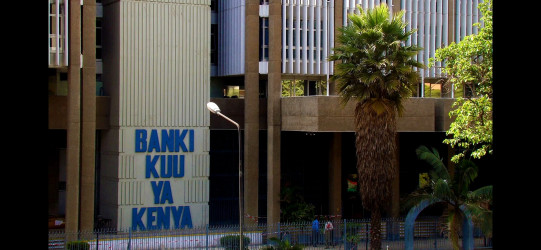Why Kenya is in no rush to roll-out a digital currency


Audio By Vocalize
First off, digital currencies are already deeply entrenched in the economy through differentiated forms such as mobile-money platforms.
While the Central Bank of Kenya (CBK) discussion paper on Central Bank Digital Currencies (CBDC) has been read in some circles as a pointer toward the establishment of a CBK digital currency, the reserve bank has been quick to state such a move is not a foregone conclusion just yet.
“From our perspective, it’s not a foregone conclusion that we will or will not have a CBDC but that question needs to be asked,” CBK Governor Patrick Njoroge told NTV last week.
Analysts back the reserve bank view as they view a move to unveil a digital currency at this point to be largely premature.
This is based on the already high financial inclusion rate amidst questions on whether a CBDC would help close the remaining gap to universal financial inclusion.
According to the 2021 Finaccess Household Survey, the rate of persons entirely excluded from financial services in Kenya stands at 11.6 per cent.
This against a higher exclusion rate of 41.3 per cent in 2006 with the mobile-money ecosystem helping bridge the gap over the years.
According to Kato Arnold Mukuru, the Head of Frontier Research at EFG Hermes, a CBK backed digital currency will not be the solution to financial inclusion in the Kenyan context.
“It does sound nice to see all Central Bank Governors rushing to the table. I don’t think CBDCs are the solution at all. The solution is to perhaps make all transfers and payments free. My mother has just gotten over M-Pesa, now you want to give her an electronic currency?” he posed.
“My M-Pesa is digital already, I don’t need a CBDC. What I need the government to do is tell M-Pesa to stop charging me for person to person transfers.”
Besides the deepening of financial inclusion, a Central Bank-backed digital currency is expected to have a natural impact of lowering transaction fees by increasing competitiveness in the payments ecosystem.
Even so, analysts still see the limitation of a digital currency from an infrastructure point of view.
“From our understanding, the CBDC will be application based. Despite having a high mobile penetration rate, the penetration of 4G handsets is still relatively low and so platforms such as M-Pesa have a relatively largely captive market based on their existence in both USSD and smartphone ecosystems,” noted EFG Hermes Vice President for Utilities and Telecoms Silha Rasugu.
According to the latest data from the Communication Authority of Kenya (CA), the penetration of smartphones stood at just 54.5 per cent as of the end of December 2021 or a respective 26.5 million smartphone devices.
For, two jurisdictions that have piloted/rolled-out the use of CBDCs including China and Nigeria, market uptake for the digital currency remains relatively modest.
For the CBK, a digital currency backed by the reserve bank has its best use case in cutting the cost of cross-border payments with the scope for domestic uses seemingly limited.
Currently, the CBK has invited comments from stakeholders on its discussion paper which was published on February 10.


Leave a Comment